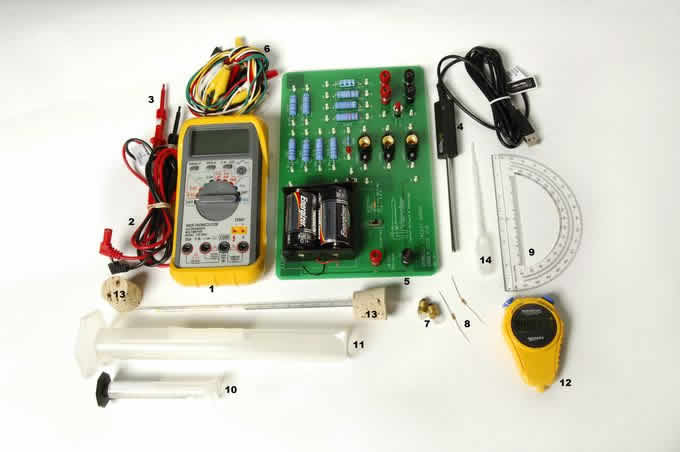Home Lab Manual
Introduction
Lab work is an important component of the introductory physics course, as it emphasizes the relation between theoretical and empirical work in physics. The lab component for this course is based on the home lab concept, which involves performing hands-on experiments outside the conventional lab setting.
Note
Note that you must accumulate a total lab average of at least 50% to pass the course.
Transfer of Lab Credit
If this is your second attempt of PHYS 201, please contact the Course Coordinator to transfer your lab marks from the first course registration. Also, if you completed equivalent lab work at a different institution, you may qualify for full (or partial) lab credit transfer (see Physics Lab Exemptions). You are encouraged to discuss this possibility with the course coordinator before submitting any materials for evaluation.
Lab Equipment
Most of the material and equipment required for the experiments in this manual are packaged in a kit that will be mailed to you. You are expected to provide additional materials in the form of common household items, and you will need a personal computer with a USB port to log your data.
When you are ready to complete the lab experiments, please request your lab kit from the AU Science Lab by completing the Lab Request Form. The lab kit will be mailed to you shortly after you request it. Sometimes there will be a waiting list, if the demand for kits is high. [Note that you should be able to perform the first experiment without the lab kit.] The kit you receive should contain a card for return postage, unless you are an international student.

Kit Contents
- multimeter (model may vary)
- multimeter cables
- clips
- “Go! Temp” temperature sensor
- circuit board
- circuit board cables
- light bulbs
- large ohm resistors
- protractor
- 10 mL graduated cylinder
- 100 mL graduated cylinder
- cork & pipette
- plastic dropper
Logger Pro 3 Software
To prepare for the lab experiments, you need to download and install the Logger Pro 3 software. The program provides an interface with connected probes and sensors, displays measurements, and saves logs of collected data. The software is also used to analyze experimental data and to produce graphs for the lab reports. Here is a Quick Reference Manual.
Note
If you have an earlier version of Logger Pro software already installed on your computer, you should remove it first before installing the current version.
Lab Safety
Appropriate care should be taken with moving objects, hot and cold liquids, and other potentially hazardous situations and materials. No materials used are to be connected to electrical power outlets. The level of risk involved in doing these labs is comparable to that of day-to-day activities, and care has been taken to avoid suggesting activities that produce hazards.
It is your decision to proceed with any experiment, and in making that decision, you control your situation and assume any risks involved. You are responsible for acting responsibly and avoiding hazards to yourself or members of the public.
Athabasca University and the suppliers of the equipment in your lab kit are not liable for the consequences of any action undertaken in association with these lab exercises. If you cannot safely do these labs, please withdraw from the course.
Workplace Hazardous Materials Information System (WHMIS)
Complete the Workplace Hazardous Materials Information System (WHMIS) training and acknowledge completion of WHMIS by checking the box on the course home page and uploading your certificate of completion prior to starting the labs.
The Lab Report
Lab reports are an effective way of communicating important information, and their use is stressed in this course. There is little point in doing a wonderful experiment with great results if you cannot effectively communicate your findings to others. Although you have some freedom in organizing your lab report, be sure to include the following sections:
- Cover Page: Create a cover page for your lab report that includes the title of the experiment, your name, student ID, and date.
- Proposed Theory and Introduction Provide a concise theoretical background.
- Procedure: Describe your procedure in your own words.
- Pictures: Include clear pictures (and/or videos) of your setup.
- Data: Organize and present the data you collect in the experiment. Also provide a description of the behaviour and apparent trend of the collected data.
- Analysis and Discussion: Provide a clear and detailed analysis of your data. Be sure to include sample calculations, especially for calculated columns in data tables. You may also need to produce graphs and perform appropriate fits. Do not forget to provide reasonable error analysis of your results and a discussion of measurement uncertainties.
- Conclusion: Present a summary of your findings and results.
Note
Information taken from sources outside this course, including the internet, should be properly referenced.
Always submit your lab reports using the drop boxes on the course home page.